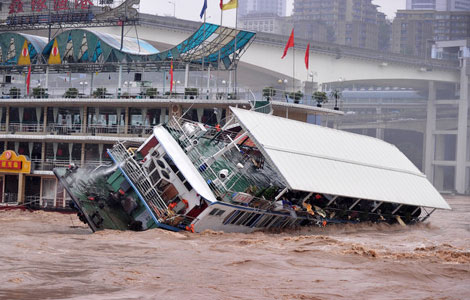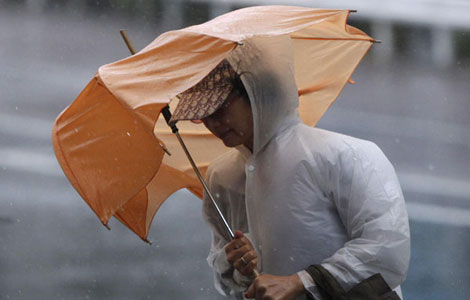More time needed for train crash probe
Updated: 2011-09-22 06:36
(Xinhua)
|
|||||||||||
BEIJING - Investigators need more time before submitting a report on the investigation of the fatal high-speed train collision that killed 40 people and injured 191 others in eastern Zhejiang province, China's top work safety watchdog said Wednesday.
"Many questions concerning technology and management need further analysis and tests by the investigation team," the State Administration of Work Safety (SAWS) said on Wednesday.
The vague statement by SAWS came after the public urged an early investigation report on the accident.
The investigative report was previously due in mid-September.
The SAWS statement elaborated on the job investigators had done in the past two months following the accident.
Investigators had convened more than 200 meetings, studied 1,300 documents and talked to 300 people to find out what caused the fatal train collision accident.
The situation is very complicated due to the distinctiveness in the design, construction, operation and management of high-speed railways, the investigation group said in the statement.
"We will not let go of a single doubtful point to investigate and collect evidence," said the statement.
According to the State Council, the responsibility of the investigation group includes finding out the facts, cause, casualties and direct economic losses of the train crash.
The group will also define responsibilities, suggest punishments for those held responsible for the accident, draw lessons from the tragedy and roll out measures to prevent future accidents.
The members of the investigation group, established by the State Council, or China's Cabinet, include senior officials from SAWS, the Ministry of Supervision, the Ministry of Railways, the All-china Federation of Trade Unions, the provincial government of Zhejiang, and the Ministry of Supreme People's Procuratorate, as well as railway experts.
Huang Yi, SAWS's spokesperson, said earlier last month that the deadly high-speed train crash could have been prevented, according to the results of an initial government investigation.
The initial investigation included a detailed survey and a simulated recreation of the accident, as well as an analysis of the data from the trains' black box recorders.
Preliminary investigations revealed serious design flaws in railway signaling equipment, as well as loopholes in railway safety management.
Related Stories
For train crash victims, wait for answers goes on 2011-09-17 08:06
108 injured in train crash discharged from hospital 2011-08-24 06:38
Hot Topics
Organ transplant bonds mother and son
Editor's Picks

|

|

|

|

|

|







